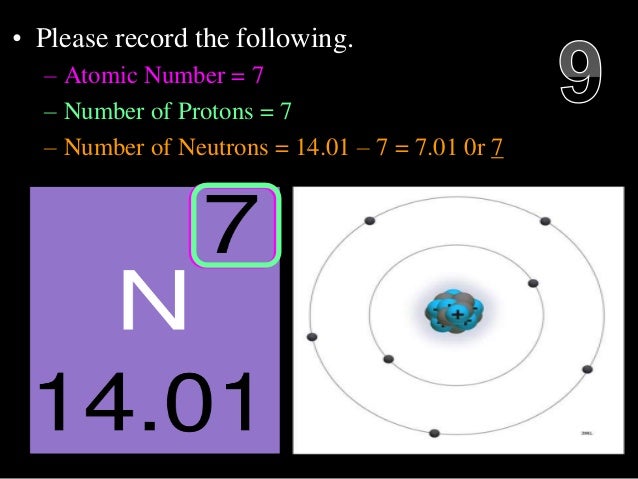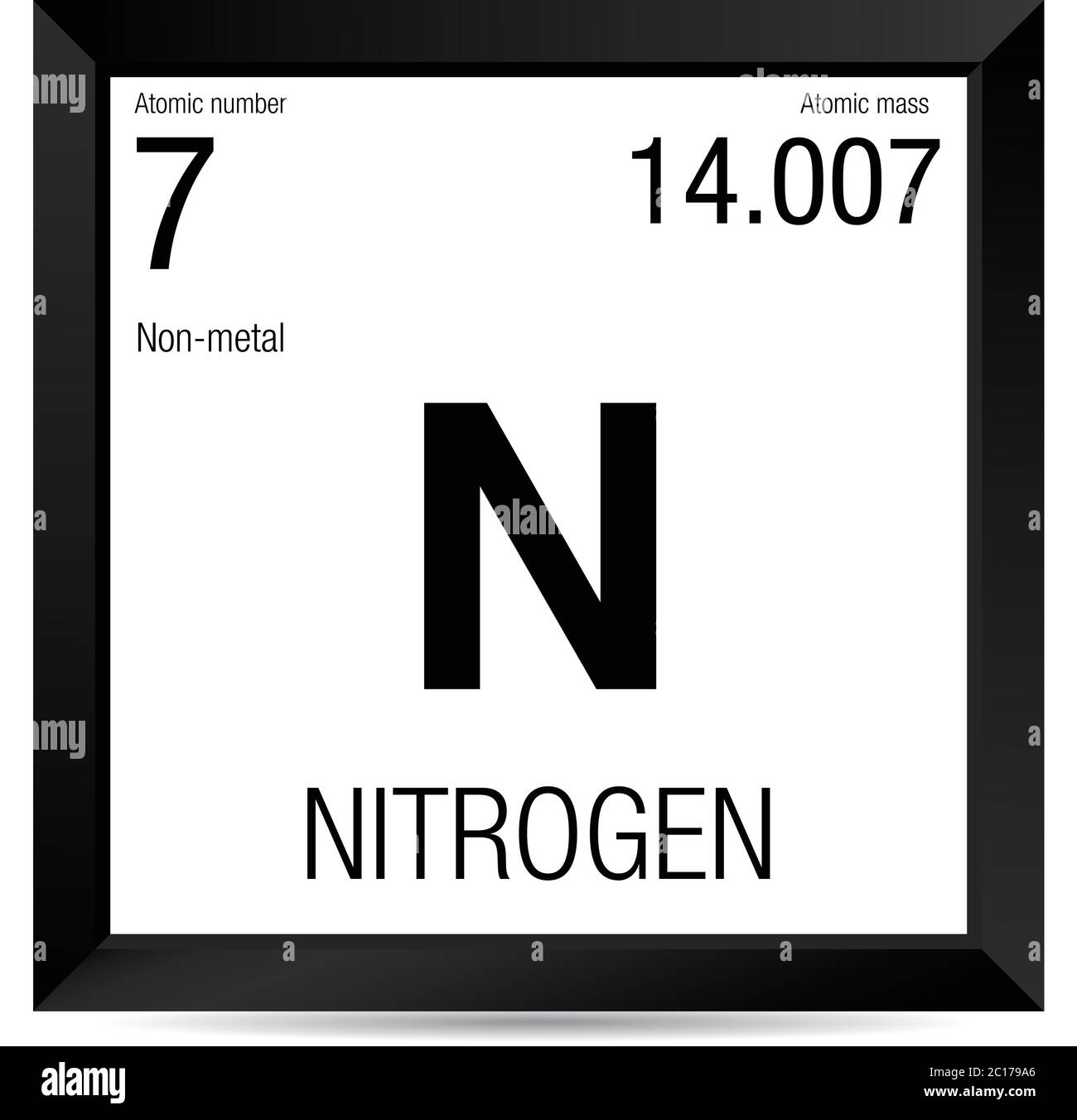The number in parenthesis gives the uncertainty in the 'concise notation' dis given in parenthesis next to the least significant digits to which it applies', e.g., 1.00794 (7) stands for 1.00794 ± 0.00007. For artificial elements the nucleon count of the most stable isotope is listed brackets as the atomic mass. Now you know that atomic number = number of protons, and mass number = number of protons + number of neutrons. To find the number of neutrons in an element, subtract the atomic number from the mass number. Here are a couple example: A single helium (He) atom has a mass number of 4 and an atomic number of 2. It must have 4 - 2 = 2 neutrons.

The atomic number of nitrogen is 7. How many protons, neutrons, and electrons make up an atom of nitrogen-15?

1 Answer
By definition, if
Explanation:
The atomic number is by definition the number of protons, positively charged particles, contained within the atomic nucleus. So if there are 7 protons, there MUST be 7 electrons, 7 negatively charged particles. Why? Because matter is electrically neutral, and positive and negative particles must be equal.
Electrons have negligible mass; the mass number depends on the number of protons contained within the nucleus, PLUS the number of neutrons. Given that we have



Related questions
In the modern periodic table, the elements are listed in order of increasing atomic number. The atomic number is the number of protons in the nucleus of an atom. The number of protons define the identity of an element (i.e., an element with 6 protons is a carbon atom, no matter how many neutrons may be present). The number of protons determines how many electrons surround the nucleus, and it is the arrangement of these electrons that determines most of the chemical behavior of an element.
In a periodic table arranged in order of increasing atomic number, elements having similar chemical properties naturally line up in the same column (group). For instance, all of the elements in Group 1A are relatively soft metals, react violently with water, and form 1+ charges; all of the elements in Group 8A are unreactive, monatomic gases at room temperature, etc. In other words, there is a periodic repetition of the properties of the chemical elements with increasing mass.
Atomic Number 7 Symbol
In the original periodic table published by Dimitri Mendeleev in 1869, the elements were arranged according to increasing atomic mass— at that time, the nucleus had not yet been discovered, and there was no understanding at all of the interior structure of the atom, so atomic mass was the only guide to use. Once the structure of the nucleus was understood, it became clear that it was the atomic number that governed the properties of the elements.
